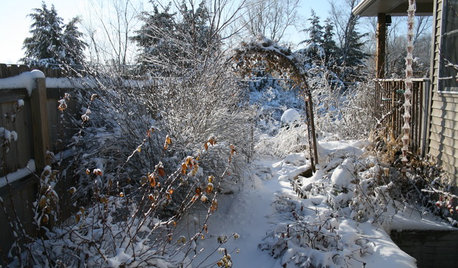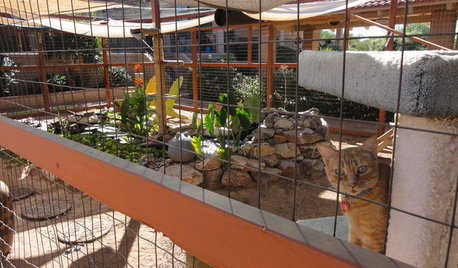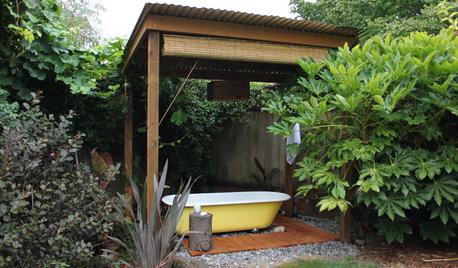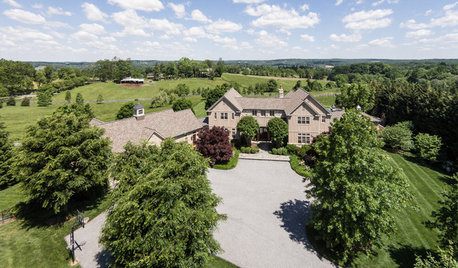Leaving pond this winter-will fish be OK?
robin321
12 years ago
Related Stories

GARDENING AND LANDSCAPINGHow to Make a Pond
You can make an outdoor fish paradise of your own, for less than you might think. But you'll need this expert design wisdom
Full Story
GARDENING GUIDESGarden Myths to Debunk as You Dig This Fall and Rest Over Winter
Termites hate wood mulch, don’t amend soil for trees, avoid gravel in planters — and more nuggets of garden wisdom
Full Story
MOST POPULARHouzz Call: Show Us Your Winter View!
Share pictures of your home and garden in winter — whatever your climate, architecture and plantings
Full Story
LIFE6 Ways to Beat the Winter Blahs
Snow and dark days dampening your spirits? These ideas will have you looking on the bright side
Full Story
DECORATING GUIDESDecorating With Nature in Fall and Winter
Bringing the beauty of the changing seasons inside is easy and inexpensive. Here are 16 ideas to get you started
Full Story
PETSSee a Deluxe 'Catio' Built for Feline Fun
Sixteen lucky cats get the run of a protected outdoor patio with ramps, steps and even a koi pond
Full Story
GARDENING AND LANDSCAPINGWhy Is There a Bathtub in the Backyard?
Nope, it's not waiting for bulk trash pickup. These days outdoor tubs are serving soakers, beer drinkers and even the fishes
Full Story
LANDSCAPE DESIGNKoi Find Friendly Shores in Any Garden Style
A pond full of colorful koi can be a delightful addition to just about any landscape or garden
Full Story
HOME TECHThe Inevitable Future of Drones Around Your Home
As Google joins the push for airborne deliveries, it seems only a matter of time before neighborhoods are buzzing with drones. Is that OK?
Full Story
FUN HOUZZ31 True Tales of Remodeling Gone Wild
Drugs, sex, excess — the home design industry is rife with stories that will blow your mind, or at least leave you scratching your head
Full StoryMore Discussions







sleeplessinftwayne
robin321Original Author
Related Professionals
Reading Landscape Architects & Landscape Designers · Forest Park Landscape Architects & Landscape Designers · Panama City Landscape Architects & Landscape Designers · San Juan Landscape Architects & Landscape Designers · Surprise Landscape Contractors · Anderson Landscape Contractors · Chelmsford Landscape Contractors · Cincinnati Landscape Contractors · Dixon Landscape Contractors · Goodlettsville Landscape Contractors · Laguna Hills Landscape Contractors · Leicester Landscape Contractors · Vineyard Landscape Contractors · Markham Landscape Contractors · Maplewood Landscape Contractorssleeplessinftwayne
comettose
robin321Original Author
comettose
jennyb5149